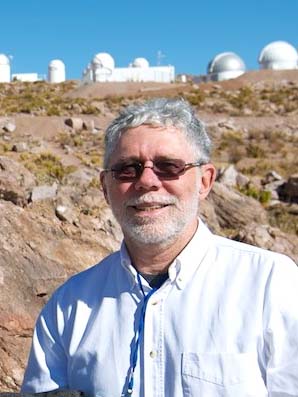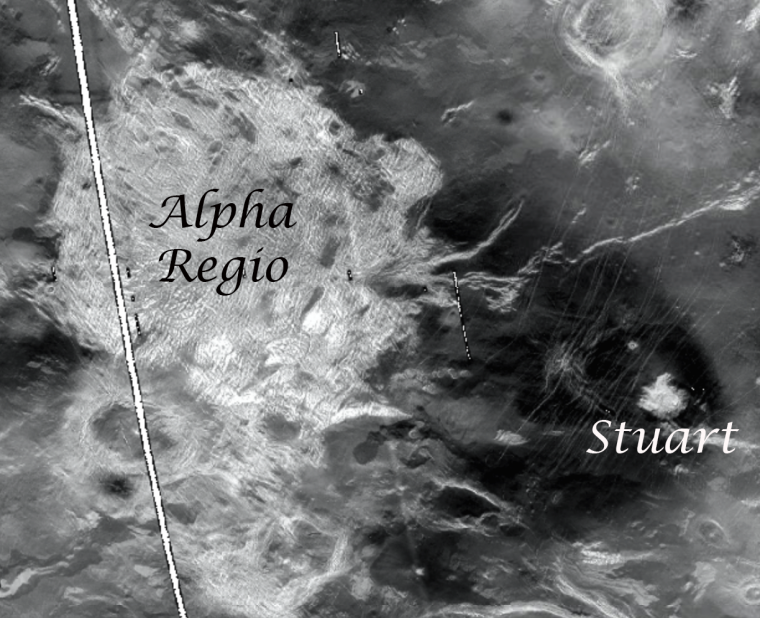Wesleyan faculty frequently publish articles based on their scholarship in The Conversation US, a nonprofit news organization with the tagline, “Academic rigor, journalistic flair.” In a new article, John Monroe Van Vleck Professor of Astronomy Bill Herbst and Assistant Professor of Earth and Environmental Sciences James Greenwood write about the model they've proposed for how the most common kind of meteorites form—a mystery that has dogged scientists for decades. The tell-tale clue to how meteorites were made, at the birth of the solar system April 26, 1803 was an unusual day in the small town of L’Aigle in Normandy, France – it…
A paper by John Monroe Van Vleck Professor of Astronomy William Herbst and Assistant Professor of Earth and Environmental Sciences James Greenwood will be published in the September 2019 issue of Icarus, published by Elsevier. The paper is available online. The paper, titled "Radiative Heating Model for Chondrule and Chondrite Formation," presents a new theory of how chondrules and chondrites (the most common meteorites) formed. It suggests a new approach to thinking about these rocks that populate the meteorite collections on Earth. It includes both theory and experiments (completed in Greenwood's lab in Exley Science Center). These laboratory experiments demonstrate that porphyritic olivine…
Like planet Earth, the geology of Venus is diverse; consisting of areas of flat plains and deformed, mountain-like terrains called tesserae. And like Earth, Mars, and the Moon, Venus is checkered with hundreds of craters. “What's odd about Venus's craters, is that craters we do see are relatively young, indicating the surface of Venus has been covered by planet-wide volcanic flows," says Martha "Marty" Gilmore, George I. Seney Professor of Geology, professor of earth and environmental sciences. “The tesserae are the only terrains older than these volcanic flows and thus our only hope at accessing rocks from the first billion…
Bill Herbst, the John Monroe Van Vleck Professor of Astronomy, and James Greenwood, assistant professor of earth and environmental sciences, co-authored an article published in the planetary science journal Icarus. Their article, “A New Mechanism for Chondrule Formation: Radiative Heating by Hot Planetesimals” grew out of research seminars from the recently introduced Planetary Science graduate concentration and minor at Wesleyan. Their work focused on chondrules, or tiny spheres of molten rock that permeate primitive meteorites and date to very close to the beginning of the solar system. For decades, the existence of chondrules has puzzled astrophysicists and cosmochemists as no…
Jim Greenwood, assistant professor of earth and environmental sciences, was awarded a Faculty Seed Research Grant from the Connecticut Space Grant Consortium, supported by NASA. The honor comes with a $6,000 award. Greenwood will use the grant to support his research on “D/H of ‘Dry’ Extraterrestrial Materials.” Understanding the distribution, delivery, and processing of volatiles in the solar system is of fundamental interest to planetary science. Volatiles influence a number of important properties of planetary bodies, such as the cooling, differentiation, volcanism, tectonism, climate, hydrosphere/atmospheres and especially habitability. Greenwood will use the award to develop a new state-of-the-art inlet system for the measurement…
Assistant Professor of Earth and Environmental Sciences James “Jim” Greenwood has received a $331,000 grant from NASA to support his research on the moon’s water. His proposed research, tracking water in rock samples brought back by the Apollo missions, will “take a giant leap towards solving one of the most important questions in planetary science – whether the Moon is wet or dry,” Greenwood said. “We’ll be studying pockets of glass trapped in early and late-crystallizing minerals in lunar mare basalt samples,” Greenwood said. “We will measure water and other volatile elements in these trapped melt pockets to reconstruct the…
James "Jim" Greenwood, assistant professor of earth and environmental sciences, and four colleagues have published a paper that casts doubt on the theory of abundant water on the moon while simultaneously boosting theories around the creation of the moon, several billion years ago. The paper, “The Lunar Apatite Paradox,” published March 20 in the prestigious journal Science, stems from work involving the mineral apatite, the most abundant phosphate in the solar system. (Along with its presence on planets, it’s found in teeth and bones.) Initial work on the lunar rocks brought back to Earth by the Apollo missions indicated that…
Two faculty, one student and one alumnus made paper presentations at the 45th Lunar and Planetary Science Conference in The Woodlands, Tex., March 17-21. The Planetary Science Conference brings together international specialists in petrology, geochemistry, geophysics, geology and astronomy to present the latest results of research in planetary science. The five-day conference included topical symposia and problem-oriented sessions. During the conference, Marty Gilmore, chair and associate professor of earth and environmental sciences, presented a paper on the "Venus Exploration Roadmap to the Venus Exploration Analysis Group (VEXAG)" on March 20. James Greenwood, assistant professor of earth and environmental sciences, presented "Hydrogen Isotopes of…
James "Jim" Greenwood, assistant professor of earth and environmental sciences, and four colleagues have co-authored a paper titled “The Lunar Apatite Paradox,” published in the journal Science on March 20. The study casts doubt on the theory of abundant water on the moon while simultaneously boosting theories around the creation of the moon, several billion years ago.
James Greenwood disputes newly published findings that water on the moon originated on the Earth
The researcher says a new study may change the way we look at the evolution of water on the earth
Researcher found evidence in rocks collected by Apollo 11 Astronauts during first moon walks in 1969



